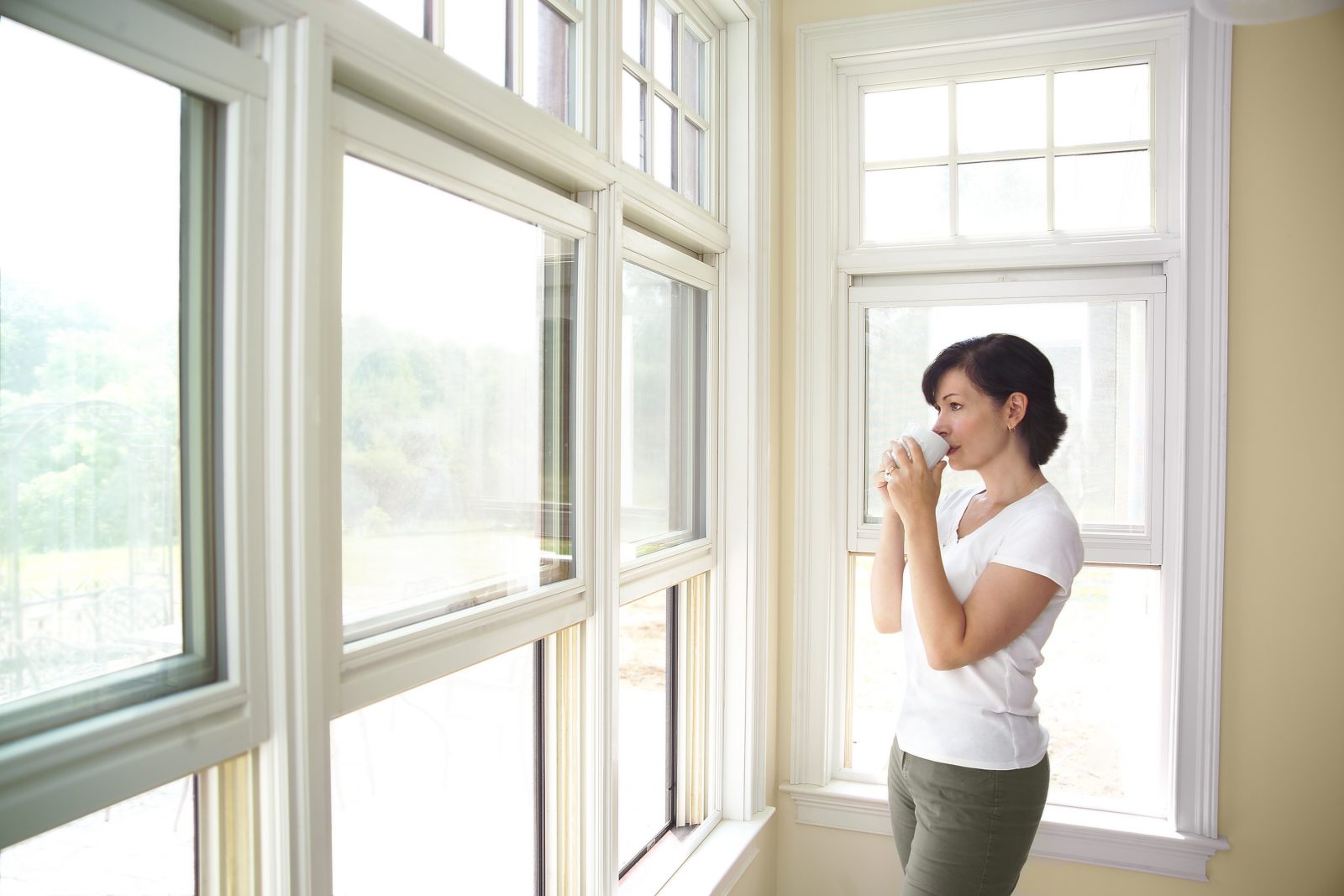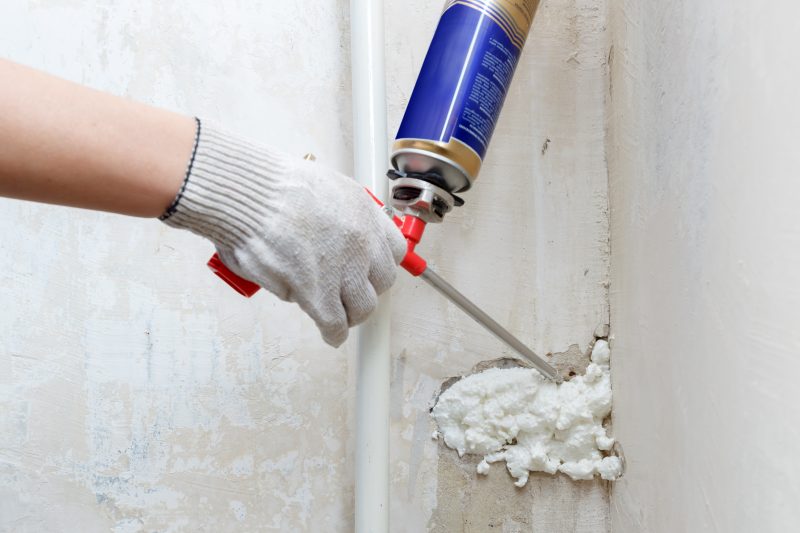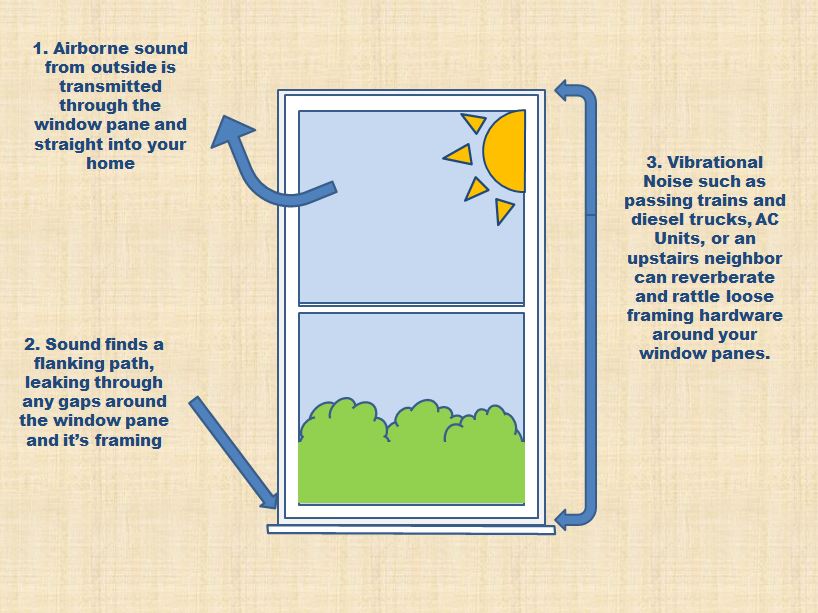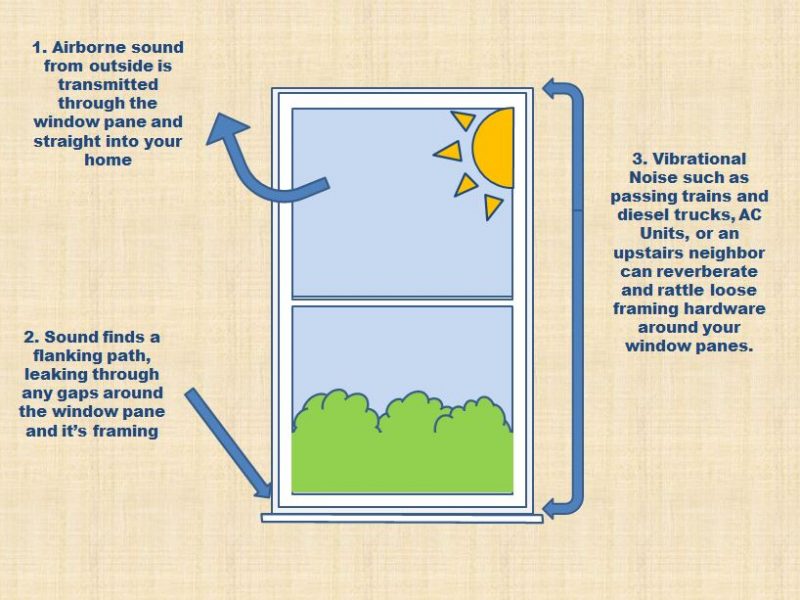No products in the cart.
How to Soundproof Existing Windows

17
Jun
Soundproof and hurricane windows can be an excellent upgrade If you have the luxury of building your home from scratch, they provide a reasonable amount of peace and quiet from outside street noise, loud neighbors, barking dogs and the like. But what about those of us who are renting, or have purchased an older existing home? Soundproof Windows are often not an option, as they require professional installation, and can cost upwards of $1,000 each. Here are Residential Acoustics top 3 affordable ways to soundproof existing windows in your home or workplace.
How to Soundproof Existing Windows
The first step to soundproofing an existing window is to understand where the sound is coming from. There are several paths that sound can take to come through the wall and window partition. Including:
- Airborne noise through the actual window pane
- Vibrational, or structure borne noise rattling window pane and metal framing
- Sound flanking (leaking) through gaps around the window
This Infographic shows the 3 ways that sound travels through a window. Sound can pass directly through the glass, because glass has a much lower soundproofing rating (STC) than the surrounding wall. Sound can also flank, or leak, around the perimeter of a window if there are some unsealed gaps present.
1. Double Up the Soundproof Rating of Your Window
A great start to soundproofing your existing window is to know how much sound it is already blocking out. Engineers and architects use a measurement called STC (Sound Transmission Class) to find the soundproofing ability of walls and windows. A typical double-pane window with 2 1/2-mil, single-strength glass will provide an STC rating of about 28 to 32. The higher the STC number of a window, the less sound is able to get through it.
The goal to truly soundproof a window or room is to reach the 50-60 STC range. Here’s what your existing window will typically provide.
| Window Partition | STC Range | Average Value |
| Single Pane Glass | 26-28 | 27 |
| Double Pane Glass | 26-32 | 26 |
| Single Pane Glass With Soundproof Curtain | 52-57 | 54.5 |
| Double Pane Glass With Soundproof Curtain | 52-61 | 56.5 |
As mentioned is the chart above, soundproof curtains are an easy and effective way to double up and add 26-29 STC to the window! When installed correctly, they create an acoustical air seal in front of the window, and contain sound blocking materials to give you some peace and quiet.
2. Seal Sound Leaks Around The Window
Next, you have sound leaks. Once your materials are sound proofed, you want to make sure there aren’t any gaps that could cause these sounds leaks. Sound blocking, similar to light blocking, can be compromised by even the smallest crack. The first thing you will want to do, is check the casing around your window for any gaps in caulking.
- Green Caulk, otherwise known as acoustical caulk can be used to seal up the edges on an older window.
- Old weather strips can be swapped out with new ones.
The easiest and most effective way to prevent sound leaks, is by using a soundproof curtain over the window opening. Residential Acoustics makes soundproof curtains that come with a Velcro perimeter seal to sweep over the partition and seal the whole thing.
Sealing sound leaks is a crucial part of soundproofing a window. Our rule of thumb is that a 1% opening can let in up to 50% of noise. Even if you’ve soundproofed the window itself with a soundproof curtain, you need to be sure the area around the window does not have any gaps, otherwise your window soundproofing efforts won’t be very effective.
3. Reinforce the Area Around Existing Windows
Now that we know the window is soundproofed against airborne noise and does not have any sound leaks, it’s time to check the foundation. If you’re still having a noise issue, structure borne sound could be the sneaky culprit.
Through flooring in raised foundation home: As you know, a lot of the good things in life come with trade-offs. While your raised foundation home may come with a lot of benefits including being a natural insulator and reducing the risk of your home flooding, it could be the reason outside noise is still getting in.

Your local insulation company can fill a low STC wall with acoustic insulation in the cavity around a window. Also, you can use acoustical caulk in gaps around an existing window to prevent sound from leaking in through any possible gaps.
Rattling between panes on double hung window: Another reason for unwanted noise could be the result of poor structure such as rattling between panes on a double hung window. I lived in an apartment complex that was located in a developing part of town. During my time living there a hotel was built on one side of the complex and construction had begun on a new apartment complex on a different side of my building. The hotel construction wasn’t as big a problem for me as the new apartment complex was because my first floor window faced this new project. Some mornings I woke up in a shock because the noise from the construction was actually causing my windows to rattle.
Loose or old framing and hardware around window: Do you remember the last time you checked the condition of the hardware on the windows in your home? Old framing and hardware around your existing windows could be contributing to unwanted sound still getting in. A DIY fix could be a temporary and affordable option to replacing your windows.
Why You Should Soundproof Existing Windows
Soundproofing existing windows is definitely a great option in terms of saving money. You’ll also avoid a big construction project going on in your home. Using a soundproof curtain, for example, will allow you to take your investment with you if you move into a new home.
For more information on soundproofing your home, check out our blog Ultimate Guide to Soundproofing Your Apartment.
Summary

Article Name
Soundproof Existing Windows
Description
There are several paths that sound can take to come through the wall and window partition. Including:
* Airborne noise through the actual window pane
* Vibrational, or structure borne noise rattling window pane and metal framing
* Sound flanking (leaking) through gaps around the window
Author
Rachel Lodato
Publisher Name
Residential Acoustics
Publisher Logo


